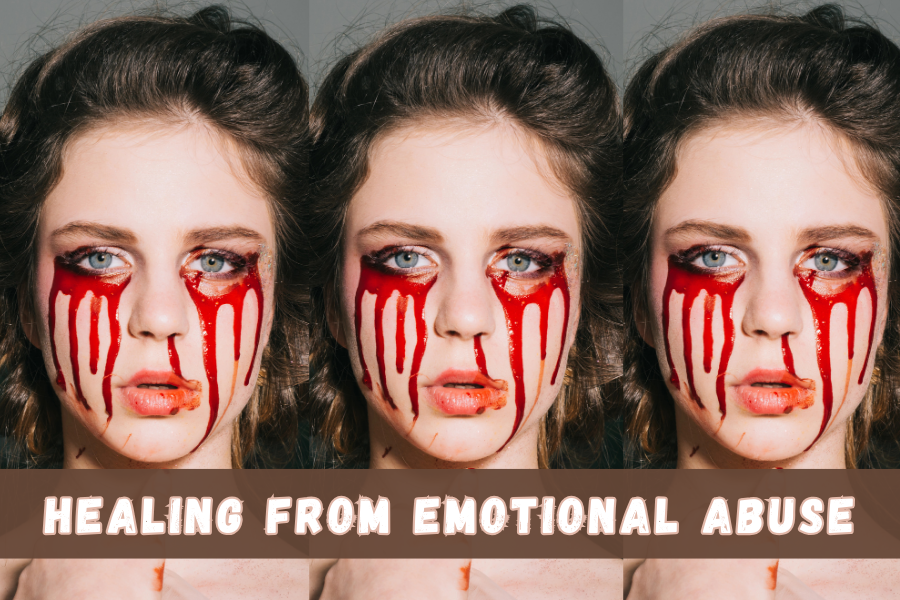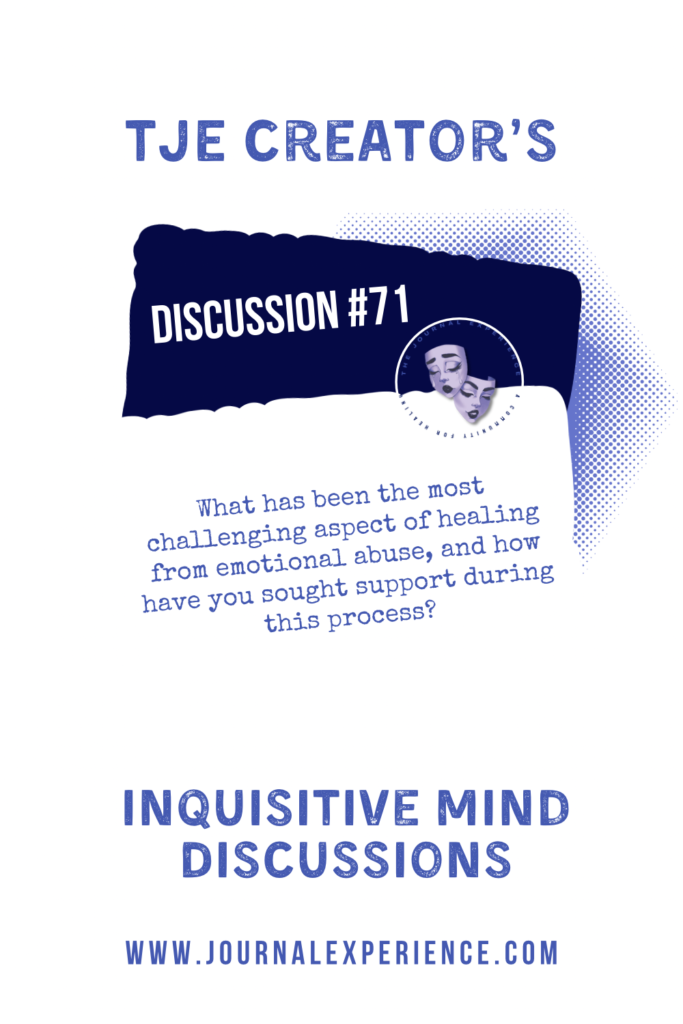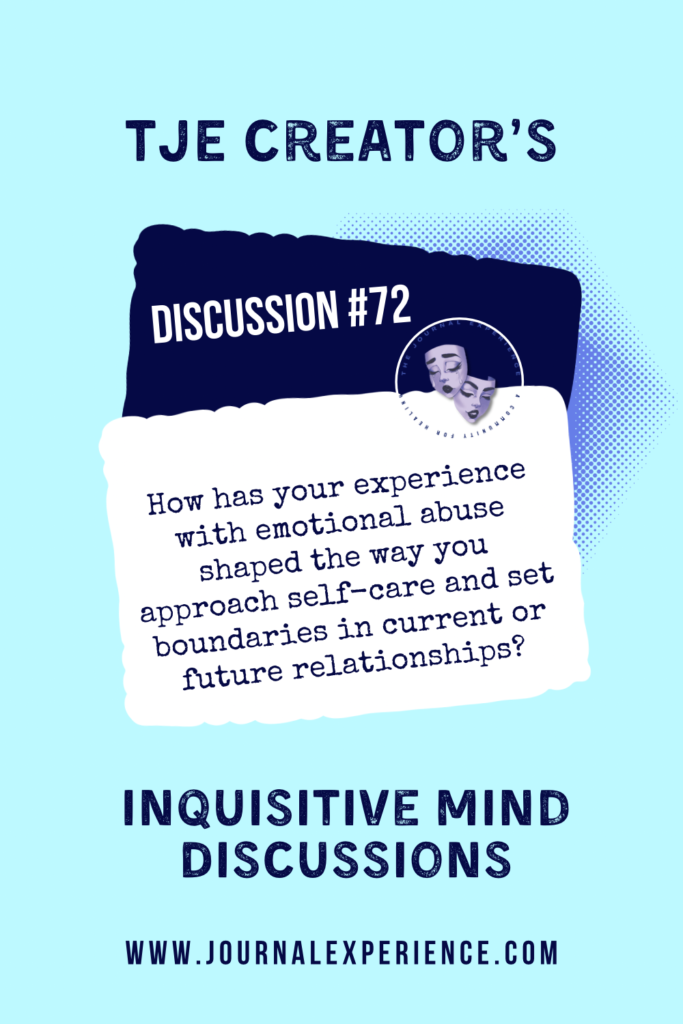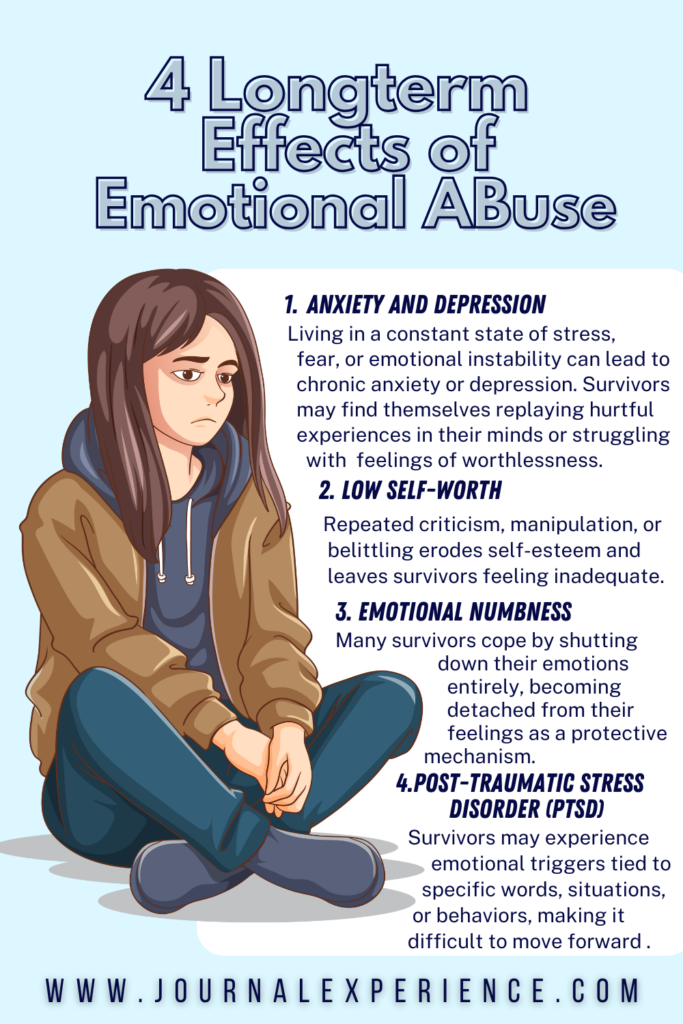Emotional abuse leaves deep, invisible scars that can have a lasting impact on mental and emotional well-being. It is often subtle, making it harder to identify and address.

Whether you’ve endured manipulation, gaslighting, or prolonged emotional neglect, recovery is possible with the right understanding and support. This blog post will guide you through understanding emotional abuse, recognizing its signs, and taking actionable steps to heal. It also highlights the importance of therapy and support systems in reclaiming your emotional health.
What is Emotional Abuse?
Emotional abuse is a pattern of behavior aimed at controlling, demeaning, or manipulating another person through psychological means. Unlike physical abuse, it doesn’t leave visible marks, but its effects on mental health and self-esteem can be profound.
Forms of Emotional Abuse
Recognizing the different forms of emotional abuse is crucial for understanding and addressing it. Emotional abuse doesn’t always look the same, and abusers may use multiple tactics simultaneously to exert control. Here are some common forms of emotional abuse:
1. Gaslighting:
Gaslighting is a manipulative tactic where the abuser distorts your perception of reality. They may deny events, twist facts, or convince you that your feelings and memories are invalid. Over time, this can lead to self-doubt, confusion, and a diminished sense of autonomy. Gaslighting is particularly harmful because it makes you question your instincts and erodes your confidence in your own judgment.
2. Verbal Attacks:
Verbal abuse involves a relentless pattern of criticism, name-calling, insults, and humiliation. The abuser uses words as weapons to belittle and demean you, stripping away your confidence and self-esteem. Unlike an occasional argument, verbal attacks are consistent and aim to control through emotional pain.
3. Isolation:
Isolation occurs when the abuser deliberately cuts you off from your support network, such as friends, family, or colleagues. This can include forbidding social interactions, limiting your access to resources, or creating circumstances where you feel unwelcome or unwanted in social settings. By isolating you, the abuser gains more control, leaving you dependent on them and less likely to seek help.
4. Emotional Neglect:
This form of abuse involves a lack of emotional support, validation, or engagement. The abuser may ignore your feelings, dismiss your concerns, or make you feel unimportant. Over time, this invalidation creates a profound sense of loneliness and worthlessness, as though your emotions don’t matter.
5. Controlling Behavior:
Controlling behavior can manifest in many ways, including monitoring your actions, dictating your choices, or manipulating your decisions. Abusers may demand to know where you are at all times, restrict your financial independence, or coerce you into doing things against your will. The ultimate goal is to maintain power over your life and strip away your ability to make autonomous choices.
6. Passive-Aggressive Behavior:
Passive-aggressive tactics may include silent treatments, backhanded compliments, or indirect criticism. These actions are meant to hurt you subtly, without taking direct responsibility. Passive aggression can be just as harmful as overt forms of abuse because it creates confusion and emotional instability.
7. Blame and Guilt:
Abusers often shift responsibility for their actions onto their victims, making you feel as though you’re the problem. They may blame you for their bad moods, failures, or abusive behavior, leaving you burdened with guilt and self-blame. This tactic keeps you in a constant state of trying to “fix” things, even when the problem isn’t yours to solve.
Identifying these behaviors is the first and most powerful step toward breaking free from the cycle of emotional abuse. By naming the tactics used against you, you can begin to reclaim your autonomy, rebuild your self-esteem, and seek the support necessary to heal.
Emotional abuse is never your fault, and understanding its many forms is an essential part of empowering yourself to take action and protect your emotional well-being.

Recognizing the Signs of Emotional Abuse
Emotional abuse often builds gradually, creating confusion and self-doubt. Recognizing these warning signs can help you understand your situation more clearly:
- Feeling anxious, constantly “walking on eggshells,” or fearing conflict.
- Experiencing persistent guilt, shame, or a sense that nothing you do is good enough.
- Being blamed for problems or made to feel responsible for someone else’s actions.
- Being isolated from friends, family, or opportunities for growth.
- Feeling manipulated into decisions you wouldn’t make on your own.
Why Emotional Abuse is Hard to Identify
One of the reasons emotional abuse is so damaging is its subtlety. Abusers often alternate between harmful behavior and moments of kindness, leaving the victim confused and more likely to tolerate the abuse.
Recognizing these patterns is a crucial step toward healing. If these signs resonate with you, remember that emotional abuse is not your fault.
The Long-Term Impact of Emotional Abuse
The aftermath of emotional abuse often lingers far beyond the abusive relationship, leaving deep emotional scars and reshaping how survivors view themselves, others, and the world. Emotional abuse doesn’t just harm mental health—it also affects behaviors, relationships, and even physical well-being. These impacts can last for years, making it essential to understand and address the effects as part of the healing process.
Emotional and Mental Health Effects
Emotional abuse can severely disrupt your mental and emotional well-being, often leaving survivors to deal with invisible wounds that take time to heal.
- Anxiety and Depression: Living in a constant state of stress, fear, or emotional instability can lead to chronic anxiety or depression. Survivors may find themselves replaying hurtful experiences in their minds or struggling with feelings of worthlessness. Over time, this emotional burden can impact every aspect of daily life, from work to personal relationships.
- Low Self-Worth: Repeated criticism, manipulation, or belittling erodes self-esteem and leaves survivors feeling inadequate. Emotional abuse often instills a belief that the victim is inherently flawed or incapable, making it difficult to rebuild confidence even after leaving the abusive situation.
- Emotional Numbness: Many survivors cope by shutting down their emotions entirely, becoming detached from their feelings as a protective mechanism. While this may seem like a way to shield oneself from pain, it can also prevent survivors from experiencing joy, love, or connection.
- Post-Traumatic Stress Disorder (PTSD): Emotional abuse can lead to symptoms of PTSD, including intrusive memories, flashbacks, nightmares, and heightened vigilance. Survivors may experience emotional triggers tied to specific words, situations, or behaviors, making it difficult to move forward.
Behavioral Changes
Emotional abuse doesn’t just impact how you feel—it can also shape how you behave, particularly in relationships and social situations.
- Difficulty Trusting Others:
Survivors often struggle to form healthy relationships, fearing that new connections might lead to betrayal or harm. This lack of trust can create barriers to intimacy and may leave survivors feeling isolated or withdrawn. - Overcompensating:
Emotional abuse can instill a need to seek constant approval or validation, leading survivors to overachieve or go out of their way to please others. This behavior stems from a deep-seated fear of criticism or rejection. - Avoidance:
Fear of conflict or rejection may cause survivors to avoid confrontation or suppress their emotions altogether. This avoidance can lead to unhealthy patterns, such as staying silent when boundaries are crossed or neglecting personal needs to maintain peace. - Hypervigilance:
Many survivors become overly alert to signs of danger, constantly scanning for potential threats in their environment. This heightened state of awareness can make it difficult to relax or feel safe, even in non-threatening situations.
Physical Health Consequences
The emotional stress caused by abuse doesn’t stay confined to the mind—it can manifest in physical ways, often leading to long-term health challenges.
- Chronic Stress:
Prolonged exposure to emotional abuse triggers the body’s stress response, which, over time, can weaken the immune system and make the body more susceptible to illness. - Sleep Issues:
Many survivors struggle with insomnia, nightmares, or other sleep disturbances. The inability to rest properly further exacerbates physical and emotional fatigue, creating a cycle that’s difficult to break.
- Fatigue and Chronic Pain:
Emotional abuse often leaves survivors feeling physically drained. This exhaustion can manifest as muscle tension, headaches, or unexplained pain, which are the body’s way of expressing unprocessed stress. - Heart and Digestive Problems:
Long-term emotional abuse has been linked to an increased risk of heart disease, digestive issues, and other stress-related conditions. The constant flood of stress hormones can disrupt the body’s normal functioning, leading to chronic health problems.
If emotional abuse has left deep, lingering wounds, the Healing The Inner Trauma Child (HITCH) Method offers powerful tools to rebuild emotional resilience, reconnect with your inner self, and begin healing trauma at its root.
Recognizing and Validating Your Experience
The lasting impacts of emotional abuse validate the seriousness of what you’ve endured and emphasize the need for recovery. It’s important to acknowledge that these effects are not a reflection of your weakness but rather the result of sustained psychological harm. Healing is a process, and seeking help—whether through therapy, support groups, or self-care practices—is a powerful step toward reclaiming your life and rebuilding your sense of self.
By understanding how emotional abuse affects every aspect of your well-being, you can better equip yourself to break free from its lingering effects and begin the journey toward healing and renewal.
Steps to Begin Recovery
Healing from emotional abuse is a journey that requires courage, patience, and self-compassion. While the process looks different for everyone, these steps can serve as a roadmap:
1. Acknowledge the Abuse
The first step to healing is accepting that what you experienced was abuse. This can be difficult, especially if the abuse was normalized or minimized by others, but it’s vital for moving forward.
2. Create Healthy Boundaries
Distance yourself from the abuser if possible. If cutting contact is not feasible, set clear boundaries to protect your emotional well-being.
3. Practice Self-Compassion
Many survivors blame themselves for the abuse. Replace negative self-talk with affirmations that remind you of your worth and strength.
4. Reconnect with Yourself
Journaling, meditation, and hobbies can help you rediscover your identity outside the abusive relationship. These practices allow you to process your emotions and explore your interests in a safe and empowering way.
5. Build a Support System
Surround yourself with people who understand and uplift you. Sharing your experiences with trusted friends, family, or support groups can provide much-needed validation and encouragement.
If rebuilding trust and emotional strength feels overwhelming, the Codependency Therapy | Self Love Recovery Treatment Program provides expert guidance to help you set boundaries, heal emotional wounds, and restore your sense of worth.

Seeking Professional Support
While self-help strategies are invaluable, professional therapy is often essential for healing from emotional abuse. Therapists can provide a safe space to process your emotions, rebuild self-esteem, and develop coping mechanisms.
Types of Therapy to Consider
- Cognitive Behavioral Therapy (CBT): Helps you identify and reframe harmful thought patterns.
- Trauma-Focused Therapy: Specifically designed to address trauma and help survivors process emotional wounds.
- Group Therapy: Connecting with others who have experienced emotional abuse can be incredibly validating and healing.
How to Find a Therapist
Look for a licensed professional with experience in emotional trauma. Many therapists offer free consultations, so don’t hesitate to explore your options to find the right fit.
True healing comes from understanding where relational wounds begin. The Webinar: Origins of Codependency and Pathological Narcissism offers trans-formative insights into how emotional trauma shapes relationship patterns—and how you can break free for good.
Rebuilding Your Future
Healing from emotional abuse is not just about recovering from the past but also about creating a brighter, healthier future. It’s about rediscovering joy, building resilience, and embracing the life you deserve.
Ways to Foster Resilience
- Set Goals: Focus on achievable, meaningful goals that give you a sense of purpose and accomplishment.
- Cultivate Healthy Relationships: Seek connections with people who respect your boundaries and encourage your growth.
- Celebrate Progress: Healing is not linear, but every step forward is a victory worth celebrating.
Overview
Healing from emotional abuse is a challenging but transformative journey. By understanding what emotional abuse is, recognizing its signs, and seeking recovery through self-care and professional support, you can rebuild your confidence and reclaim your emotional well-being. Therapy, a strong support system, and self-compassion are vital tools in this process.

If you’re ready to take the next step in your healing journey, consider joining The Journal Experience community. Our resources, including guided journals, workbooks, and a supportive network, are designed to empower you every step of the way. Subscribe to the TJE Newsletter for exclusive content and start reclaiming your life today.
Join the experience—healing begins here.